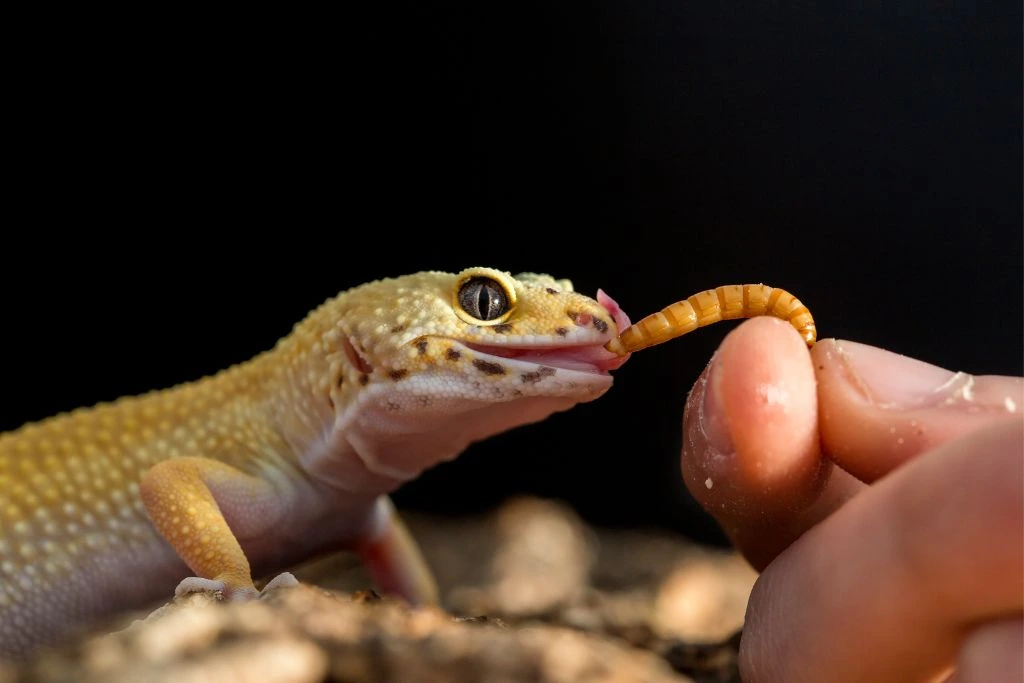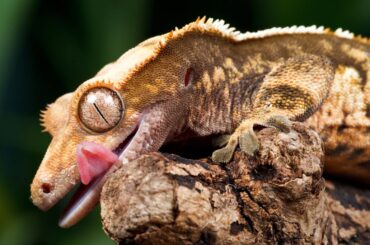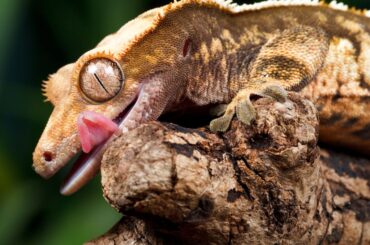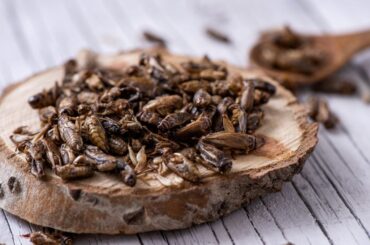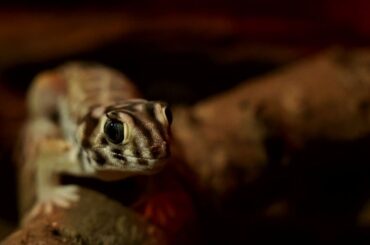Yes, leopard geckos can consume mealworm beetles and darkling beetles. Whether or not they do so, however, will be determined by each gecko. Some geckos may find the beetle difficult to chew on compared to other insects, like crickets, whereas others will step right in and nibble away.
Fortunately, such beetles are relatively simple to breed, and since numerous reptiles and other animals love to eat them, they can help central defenders save money on food.
If you decide to feed your gecko mealworms, place them in a sandwich bag with a calcium supplement and shake violently. It will ensure that their guts are full of calcium. Always remove items as soon as possible if your gecko doesn’t like them to avoid unpleasant odors or bites.
Do Mealworms Turn Into Beetles?
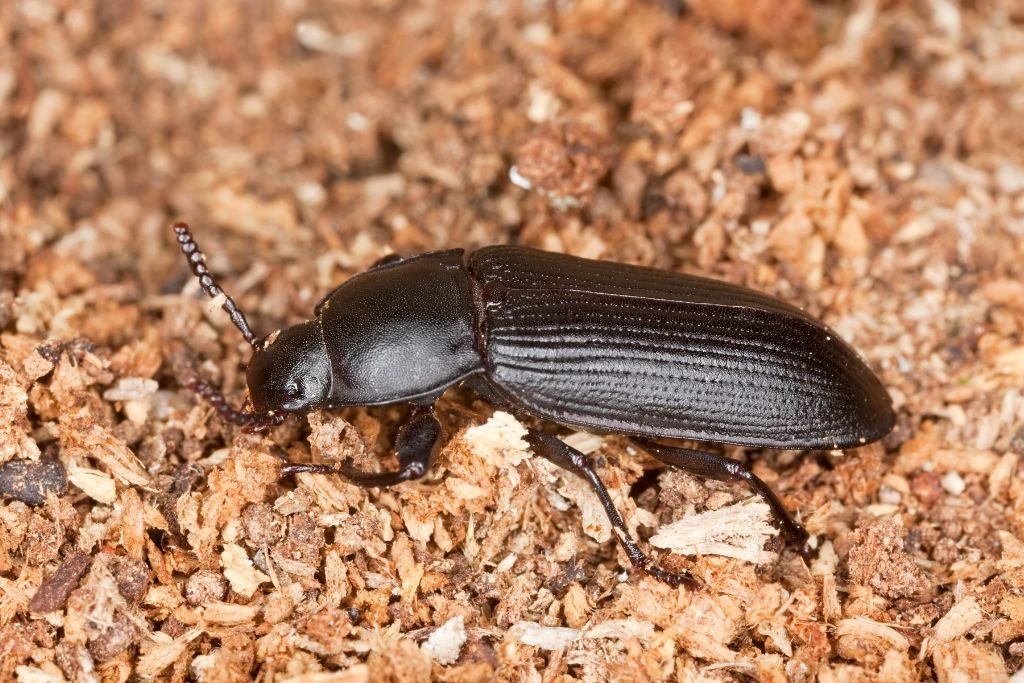
A mealworm beetle will appear within two to three weeks after the mealworm has pupated. It is referred to as a “darkling beetle.” Normally, the egg stage lasts 7 to 14 days. However, low temperatures and high humidity can treble the incubation period.
Mealworm Life Cycle
Mealworms are not worms, despite what birds, reptiles, and other creatures may think. They are the darkling beetle’s larvae. Mealworms are members of the Tenebrio Molitor genus, and there are more than 20,000 varieties of darkling beetles.
A darkling beetle undergoes complete metamorphosis and, as a result, it goes through four unique life stages–eggs, larvae, pupa, and adults. Due to environmental elements, including temperature, moisture, food, and water, the length of time a darkling beetle spent in each stage might differ significantly.
Egg
An egg is the first stage of existence. The egg is tiny, roughly the size of a dust particle, and has the shape of a white bean. Due to its stickiness, dirt, dust, and debris soon cover the egg. Between an egg hatching and the larva emerging is one to four weeks.
Larva
The second stage of life, which lasts for eight to ten weeks, is spent as a brown larva. At this point, the insect is a mealworm. It is quite small when it first hatches but eventually reaches a length ranging from one and a half inches.
The worm needs to molt and lose its hard exoskeleton to grow. Ten to twenty molts will take place during this period. The exoskeleton of a recently molted worm would be fragile and whitish, but it will immediately stiffen. A mealworm spends time feeding and growing to store energy for the impending transition.
Pupa
A mealworm will change into an alien-looking, white pupa during its last molt. It cannot eat because it lacks a mouth or anus. Although it has legs and wing buds, they are inactive. The pupa can only wiggle because it is completely helpless. The pupa will go through this stage of life for one to 3 weeks as it changes into its adult body and organs.
Adult
The darkling beetle stage of the insect’s life lasts one to three months. The exoskeleton of the white beetle will be soft. The outer shell will turn brown and black as it becomes harder. Although the beetle has strong wings, it cannot fly.
Beetles start mating and reproducing after one to two weeks of adulthood. Female darkling beetles can produce hundreds of eggs during their adult life, making them prolific breeders.
How To Store Mealworms?
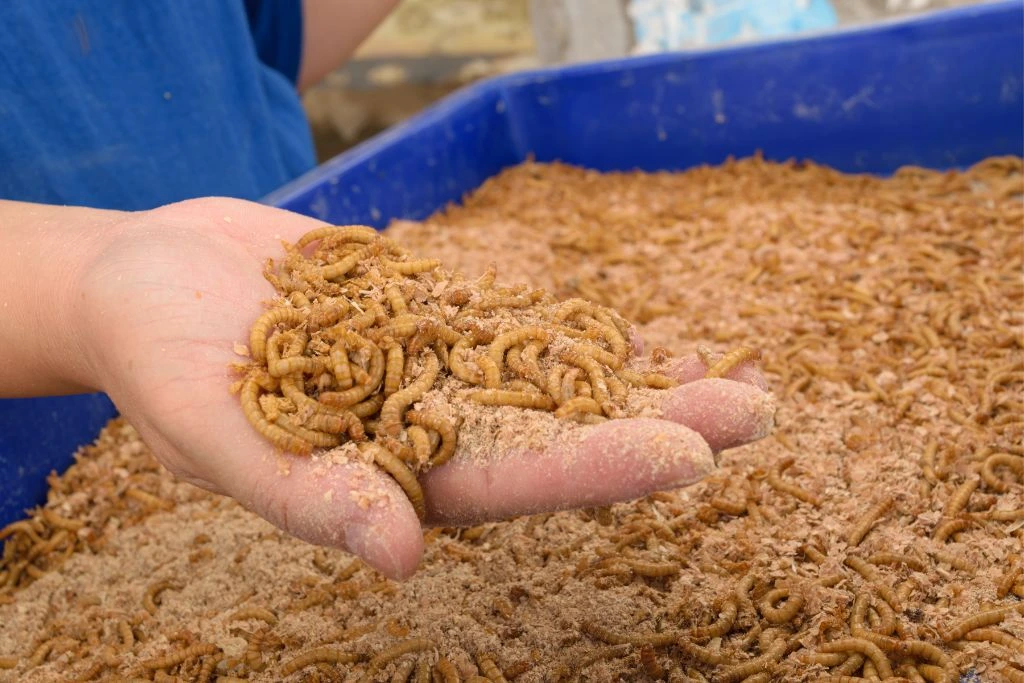
Mealworms can be kept in two ways. You may store them cold to stop them from developing into pupa and, ultimately, the darkling beetle. Alternatively, you might maintain a warm environment, which would encourage growth and eventually cause them to pupate and change.
Household Mealworms
Keep mealworms in open, shallow containers. They can only escape if the container is positioned approximately one inch above the mealworms’ substrate. Pick a glass or plastic container that is simple to clean.
Install a 3-inch coating of mealworm maintainer substrate, such as Josh’s Frogs Mealworm Bedding, in the mealworm tank after carefully cleaning and drying the tank. It serves as both bedding and nourishment.
You can also feed the mealworms some finely ground grain, like oats.
Allow the mealworms to dig down into the bedding by spreading them out. It is always preferable to use a larger container. The bedding must be changed about once a week.
Keeping Mealworms Healthy and Alive
Mealworms need a climate of 70℉ to maintain their natural temperature. They will consume a lot of food at this temperature and expand quickly. Before becoming a pupa, they will be active for around 3 weeks.
Keeping Mealworms Dormant and Cold
Mealworms can go dormant if kept in a fridge at 45-50℉. It will cause delayed transformation into pupa and, eventually, darkling beetles.
Refrigerated mealworms can be fed to your leopard gecko for up to 6 weeks.
It’s essential to feed mealworms before storing them in the refrigerator. They won’t eat if they become chilly and will go dormant. They might also starve if they have yet to eat well beforehand.
How to Feed Mealworms to Leopard Geckos?
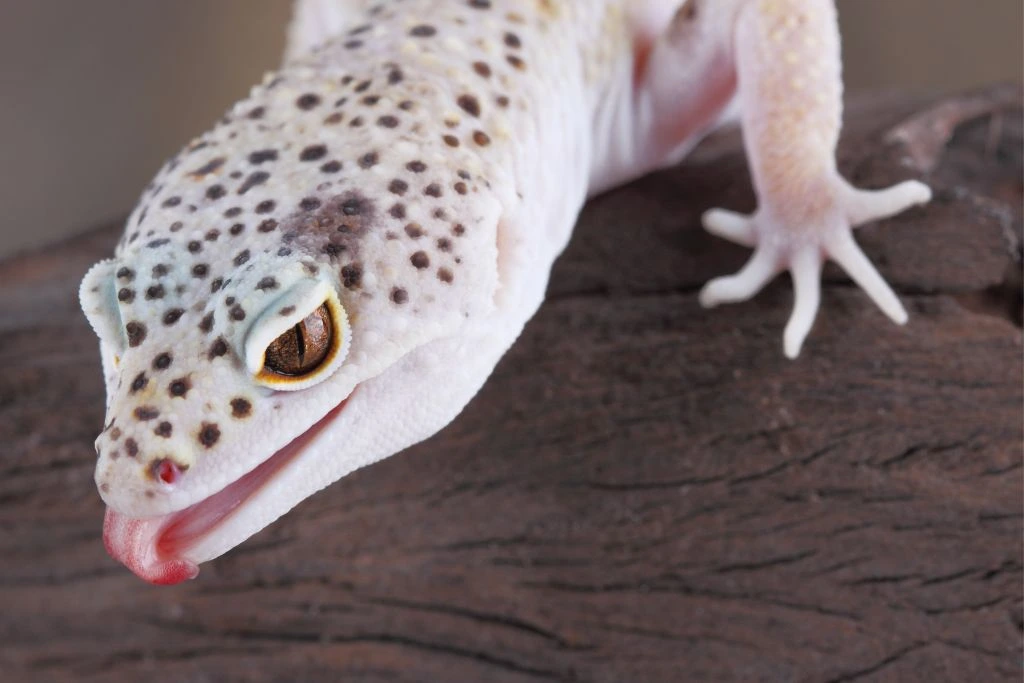
Baby Leopard Gecko
Leopard gecko babies must be fed every day. Until they are 4 inches long, young leopard geckos must be fed 5 to 7 tiny crickets or mealworms daily. Every other day, until they are fully matured in about 10 to 12 months, larger food must be provided.
However, unless they are critically underweight and you’ve already contacted a veterinarian, they do not profit from ingesting calorie-dense, fatty feeder insects.
Dubia roaches, tiny crickets, buffalo worms, smaller mealworms, and black soldier fly larvae are good diets for young leopard geckos.
Juvenile Leopard Gecko
At the intermediate stage, juvenile leopard geckos should consume eight to ten little mealworms or between five and six large worms.
The width of these worms should be the distance between your geckos’ eyes.
Adult Leopard Gecko
Adults can eat two or three times per week, 6 to 7 huge crickets or mealworms, while using dietary supplements like waxworms or calciworms. 3 to 5 worms should be fed to your leopard gecko thrice per week. Leopard geckos will soon grow spoiled on waxworms and may reject other foods, so use them sparingly.
Waxworms are designed to be an occasional treat or add fat to a gecko’s diet. Since calcium is essential, CalciWorms supplements with the necessary amount of calcium are a good choice. Fresh water in a shallow dish should always be accessible.
How Often Can You Feed Mealworms to a Leopard Gecko?
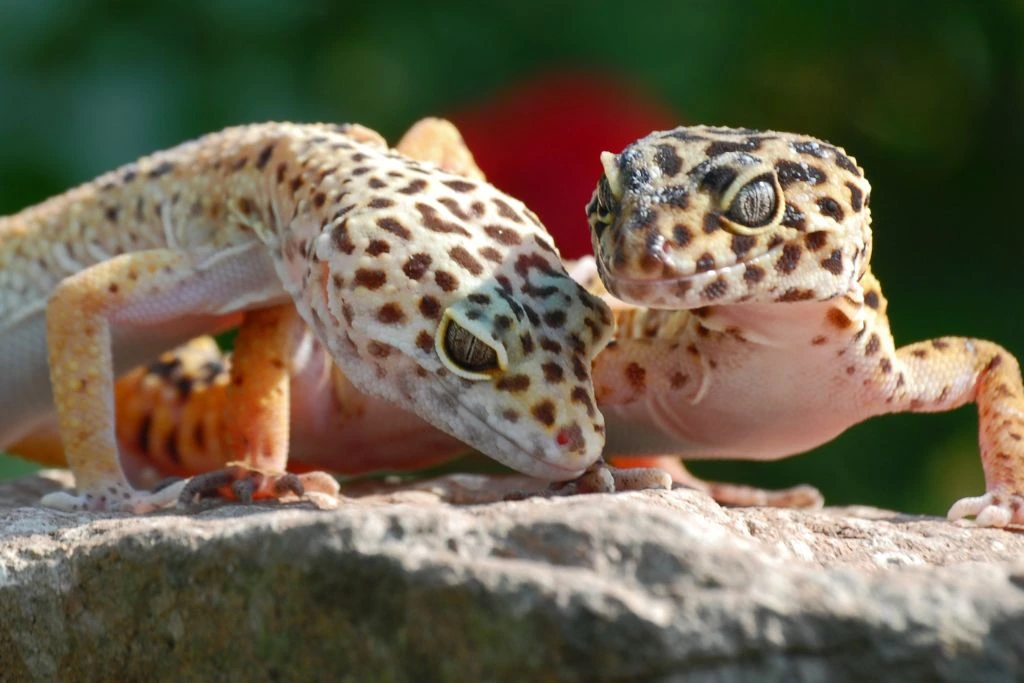
Two insects cut to one-inch length can be used as a pattern to feed your leopard gecko. Mealworms could provide critical nutrition to leopard geckos of all ages.
Many gecko owners frequently feed mealworms to their pets as feeder insects. Your gecko should receive two insects for each meal, one for each inch. In addition to giving your leopard geckos mealworms, it’s crucial to continue giving your reptiles a variety of nourishing insects.
Check out these insects because geckos can consume at least six different bugs daily as a main menu. Feed your leopard geckos only delicacies such as superworms and hornworms, which are fatty insects. You want your gecko to avoid developing love handles that are saggy.
How Much Should A Leopard Gecko Be Fed?
The question regarding how much to give a leopard gecko needs a simple solution since growing young leopard geckos requires much more food. Leopard geckos that are pregnant or recovering also require more food.
It’s also possible that the nutrients your leopard gecko requires from the meals are just as crucial as the quantity. Leopard geckos that are growing and pregnant require more energy, calcium, and fat than older adults.
However, 5 to 8 insects that are appropriate for your pet’s size are the typical number to offer a leopard gecko. The amount of food your leopard gecko consumes varies depending on the size of the insects and how frequently you feed it each week.
Other Food You Can Feed Your Leopard Gecko
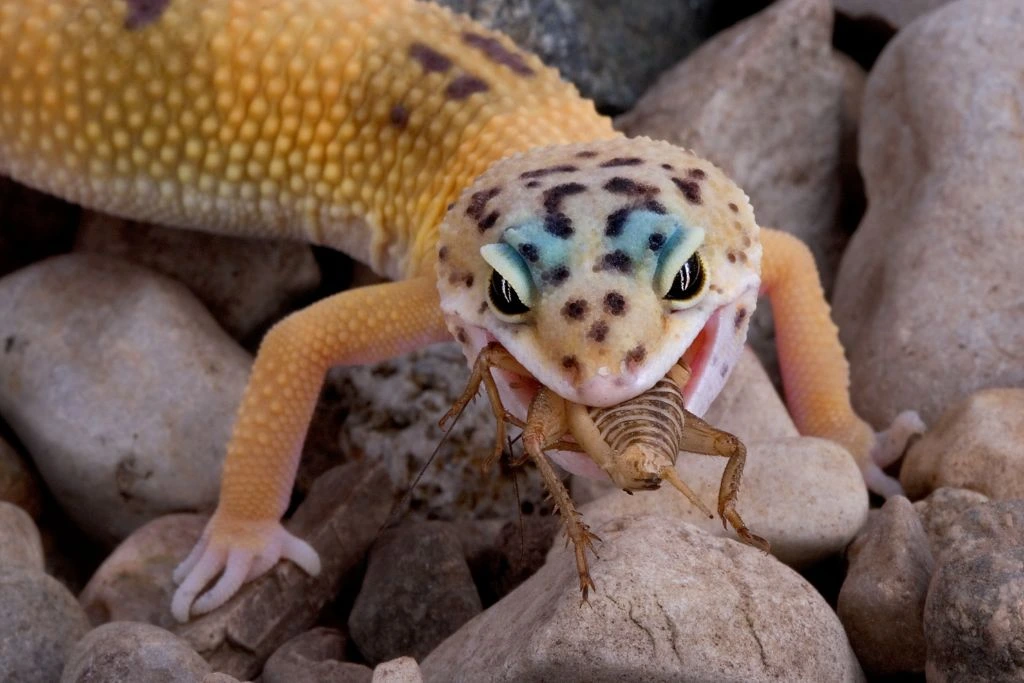
Insectivores, sometimes known as carnivores who primarily eat insects, including leopard geckos. Insects like mealworms, crickets, Dubia roaches, or black army fly larvae should be fed to them as part of a diversified diet. They are unable to consume human foods, fruits, or vegetables.
Common insects given to leopard geckos include:
- Crickets
- Grasshoppers
- Mealworms
- Superworms
- Larvae of a black soldier fly
- Dubia Roaches
- Waxworms
- Hornworms
- Silkworms
Beyond this list, your leopard gecko can be fed a variety of strange and amazing bugs.
Conclusion
Like many other reptiles, leopard geckos primarily eat crickets in their diet. Due to the chitin, certain leopard geckos might find it difficult to bite into the mealworm beetle, unlike crickets or other beetles that are simple to consume.
Offering beetles while just hatching is an excellent approach to deal with this issue because they will be considerably softer. However, it would help if you also gave them a calcium supplement to increase their nutritional worth.
It would also help if you refrained from giving your pet any wild-caught mealworm beetles since they could be contaminated with chemicals or diseases. To ensure a steady supply of nourishment for your leopard gecko, you can create a mealworm colony rather easily.

